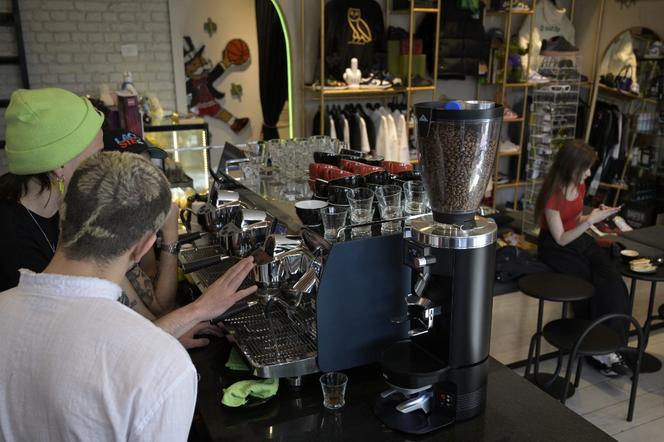


LETTER FROM BUENOS AIRES
Rita, Posta, Franja... Almost everywhere in Buenos Aires' trendy neighborhoods, short-named and similarly-styled shops have been flourishing: small, tidy, with short menus featuring the essential flat whites, lattes and espressos. Over the past three years or so, Argentina has seen a boom in these 'specialty coffee shops' – establishments offering a higher-quality beverage, from the beans to the way they are roasted and the maintenance of the machines.
The trend started where all gastronomic fashions begin, in Palermo, Buenos Aires' fashionable and touristy district, before taking over the rest of the city. But it has also spread to the rest of the country. "There's been a change in taste. Coffee culture has always existed here: Argentines love to meet outside for a snack or to have breakfast with a croissant ["medialuna," in its Argentine version] and a coffee. But now they do it with a good drink," remarked the barista Ramsès Balzan as he sipped a filtered Honduran infusion with notes of chocolate and red fruit on one of the capital's terraces. For a long time, the idea of drinking espresso in Argentina was enough to make black coffee lovers wince – the local bars offered buttery-flavored mugs and sometimes burnt beverages served too hot.
In an article published in 2019, BBC Mundo tried to explain "why coffee is so bad in Buenos Aires, the city of the most beautiful cafés." Even in the sumptuous "historic cafes," declared cultural heritage because of their architecture or history, "the coffee itself has never been important. What is important is physically being in the space," Carlos Cantini, the author of the Café Contado blog, explained to the British media at the time. Especially since, according to the specialist, among the millions of Italian and Spanish immigrants who landed in Argentina between the late 19th and early 20th century, the Spaniards were the ones who imposed their poor-quality coffee culture. Moreover, in the land of maté (the region's traditional infusion), the press agency Télam reported that annual per capita consumption amounts to just 1 kg (against 5 kg in the European Union).
"We prepare coffee with a high level of concentration. For an espresso, it's 30 milliliters of water and 18 grams of coffee weighed on the scales. We serve it at 70 degrees Celsius so that it retains all its flavor," boasted Eugenia Cuttat, the manager of the first Cuervo, a pioneer of specialty coffee shop in Buenos Aires he opened in 2017 before launching three similarly-named establishments in the following years.
You have 60% of this article left to read. The rest is for subscribers only.
